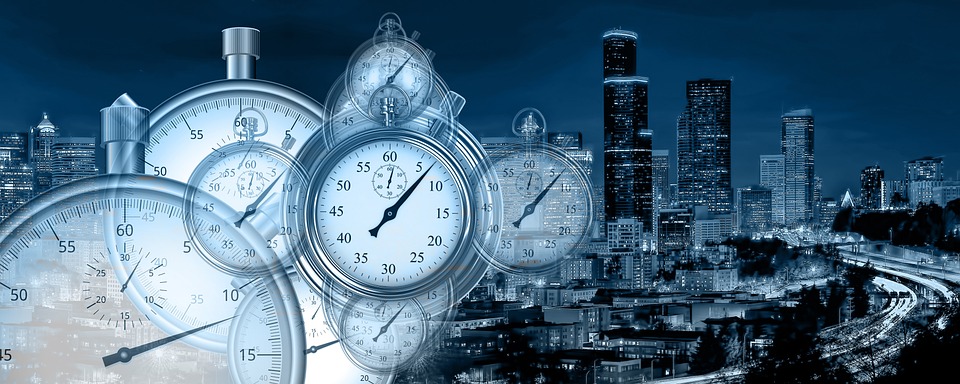Spending Is Not Inflationary; Inflation Is Not Transitory

Image Source: Pixabay
Is Government Spending Inflationary?
When the terms 'spending' and 'inflation', are used in the same sentence, it is usually in reference to government spending habits. For example, Congress recently approved massive, additional amounts of financial aid for Ukraine and Israel. Thus, we might say that "government spending is inflationary".
President Biden's ongoing attempts to cancel student loans have been labeled as reckless and inflationary. The support payments and financial aid programs associated with Covid economic shutdown were termed "highly inflationary".
Lack of fiscal restraint on the part of government can be harmful, damaging, and demoralizing. In some cases, it is downright deplorable. Lack of fiscal restraint can lead to bankruptcy and loss of confidence.
The spending, however (even egregious spending), is not inflationary; nor, are accelerating wage demands and higher prices for consumer goods and services, higher housing costs, etc. Excessive government spending and the higher cost of living are not inflationary; they are the effects of inflation.
Inflation, Government, And Central Banks
Inflation is a creation of government. All governments intentionally create inflation to foster and support their own spending habits. Governments create inflation by expanding the supply of money and credit. The ongoing inflation of the money supply leads to a loss of purchasing power in all the money in circulation. The loss of purchasing power shows up in the form of higher prices for goods and services. The higher prices are incorrectly referred to as inflation, but they are NOT inflation. The higher prices for goods and services that result from the loss of purchasing power are the effects of inflation.
Today, the role of government in the creation of inflation has been replaced by central banks. The United States Federal Reserve has been creating inflation since its inception in 1913. It efforts have resulted in a dollar that is worth one penny compared to the dollar of a century ago.
Nearly all of the things we commonly refer to today as inflation are not inflation at all. They are the effects of inflation that has already been created by the Federal Reserve via expansion of the supply of money and credit. Without this inflation the government would not be able to spend the multiple trillions of dollars it does to support its egregious spending habit.
Inflation Is Not Transitory
Treasury Secretary Janet Yellen and Fed Chair Jerome Powell have received blowback from their comments a few years ago regarding inflation being transitory. When inflation is defined correctly as "the expansion of the supply of money and credit by governments and central banks", then it is clear that inflation is not transitory. That is because inflation is an intentional, continuous, and ongoing practice of all governments and central banks. In other words, inflation never stops; so it cannot be transitory.
When Ms. Yellen and Mr. Powell made their comments, the term "inflation" was used to describe the surge of higher prices that happened post-Covid economic shutdown. A significant portion of those higher prices resulted from supply chain disruptions which have nothing to do with inflation. The portion of higher prices for goods and services attributable to supply chain disruptions would have occurred with or without the effects of inflation. Since supply chain disruptions are temporary, their effects (shortages, higher prices, etc.) are temporary; or, in this case, transitory.
It is my opinion that both Powell and Yellen were thinking about supply chain issues when the comments were made. If that is the case, then their comments were not entirely incorrect. There are two problems with that interpretation, though.
The first problem concerns the ratio of how much of the increase in prices is allocated to the effects of inflation and how much is the result of supply chain problems. I think it is reasonable that the subsequent decline in the rate of increasingly higher prices is due to lesser stress from supply chain bottlenecks and the delayed startup in economic activity.
The second problem has to do with accuracy/timing. How much of an impact on prices for goods and services can be expected from any known increase in the money supply? Even given the temporary nature of supply chain disruptions, how long will resolution take and how long before its positive effects materialize?
Conclusion
Governments and central banks create inflation intentionally and continuously. The effects of that inflation result in a loss of purchasing power of all the money in circulation. The loss of purchasing power shows up in the form of higher prices for goods and services.
The effects of inflation are unpredictable. Egregious government spending is enabled by the inflation (increase in the supply of money and credit) that is created by the Federal Reserve. The spending, itself, for all of its negative effects, is not inflationary. Inflation is not transitory because it never stops.
More By This Author:
Investors Re: Rate Cuts - "So You're Telling Me There's A Chance"
Gold, Oil, Wheat, & Stocks Since 2020
Gold Stocks Vs Gold - Choose Gold
Kelsey Williams Is The Author Of Two Books: Inflation, What It Is, What It Isn't, And Who's Responsible For It And more



